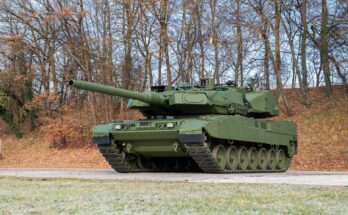
Guatemala’s military is tasked primarily with protecting the nation’s borders and fighting transnational criminal groups and drug traffickers. In recent years, the military has increased its focus on border protection and is shifting the maintenance of order in cities and towns to the national police.
Defense spending has not risen in accordance with the military’s major roles over the past five years. The 1996 Peace Accords between the government and rebels prevented defense spending from rising above 0.66 percent of GDP. Furthermore, the government limited defense spending to 0.34 percent of GDP during the 2000s. This 0.34 percent limit has since been repealed, and defense spending climbed between 2009 and 2013 – jumping 21.7 percent in 2011 and 23.1 percent in 2013. However, increases of that magnitude were not sustainable, and defense spending stabilized between 2013 and 2016, and declined by 7.4 percent in 2017. In real terms, spending declines were an even more substantial 11.4 percent between 2016 and 2017.
However, in the face of continuing threats, the government is now planning to increase spending. For 2019, the government has proposed a GTQ2.4 billion ($317.4 million) budget, representing a 23.9 percent increase over the 2018 budget. The Ministry of Defense considered asking for as much as GTQ3.9 billion for 2019, but the more modest sum was eventually settled upon as more realistic.
Personnel expenses make up the largest portion of spending for Guatemala’s Ministry of Defense, accounting for 66.4 percent of all spending in 2017. Personnel expenses are expected to climb to 67.2 percent of all spending in 2019. Together, personnel, administration, and materials made up 85.9 percent of Guatemala’s budget in 2018. Thus, after also accounting for non-military expenses, only 4.2 percent of the budget is left to purchase equipment. This figure is expected to increase to 7.2 percent in 2019.
Going forward, defense spending in Guatemala is expected to rise at a faster rate than in the recent past. Between 2019 and 2024, defense spending is expected to increase at an annualized rate of 6.1 percent.
Multiple factors will support growth in defense spending. For one, Guatemala’s economy is expected to steadily improve through the rest of this decade and into the early 2020s. Growing GDP will give the government access to more resources. Furthermore, continued threats from transnational criminal groups will require the government to respond with additional troops and improved equipment. Finally, years of non-increases in defense spending will force the government to catch up as wages continue to grow and crowd out spending on equipment.
A lifelong enthusiast of armored vehicles, Thomas serves as an analyst on Forecast International's Military Vehicles Forecast product. In addition, Thomas is responsible for updating the reports and analysis within Forecast International's International Military Markets – Latin America & Caribbean product. He also provides analysis for Forecast International's Airborne Retrofit & Modernization Forecast. Before this assignment, Thomas served as a research assistant for Forecast International's analytical team and has made written contributions to the Civil Aircraft Forecast, Military Aircraft Forecast, and Rotorcraft Forecast services. Thomas derives his knowledge from a multidisciplinary background, with a strong emphasis on the history and politics of Russia and the former satellite republics of the Soviet Union. He has studied in the Russian Federation at Saint Petersburg State University and is proficient in the Russian language at an advanced level.





